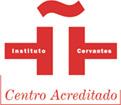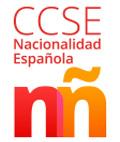Local festivals in Spain
Besides the local festivals in Elche and Alcalá de Henares, there are many other internationally renowned fiestas that our students can enjoy, should they wish to. Here is a compilation of the most important ones. Should any of our students wish to take part in one of these festivals, we can provide all the relevant information so that their visit is as enjoyable as can be.
The Festival of “San Fermín” (6th – 14th July)
Quite possibly the most popular of all the festivals celebrated in Spain, the Sanfermines run from 6th to 14th July in Pamplona, a city in the North of Spain. The fiesta begins with the launching of a large rocket-style firework (el chupinazo) from the top of the Town Hall. However, the most important act of this week-long celebration is the world-famous “encierro”, the Running of the Bulls. Here, pamploneses and visitors run an 849-metre race to the bullring, the bulls chasing behind them. It achieved international fame thanks to the American writer, Ernest Hemingway, who spread the news all over the world through his book “The Sun Also Rises”.
Fallas Festival (15th – 19th March)
Valencia’s annual Fallas festival, the most important in the city, runs from 15th – 19th March. The streets are alive with light and colour thanks to the traditional fallero monuments, which are made from papier mâché and can reach heights of up to 30 metres. Artists and craftspeople work the whole year round in preparation for the Fallas, whose character creations often criticise and ridicule Spanish celebrities or condemn social injustice. On the night of 19th March, the “Cremà” (a ritualistic burning of the Fallas) is celebrated, and work immediately begins on preparing the following year’s statues.
San Juan Bonfires Festival (20th – 24th June)
From the 20th to the 24th June, Alicante celebrates San Juan and its famous bonfires. The fiestas here are very similar to the Fallas in Valencia, since papier mâché statues are erected and placed in the city’s main streets. They are often caricatures of famous Spaniards or take a critical view of the country’s current plight. On the night of 24th June, Alicante is illuminated with the light of the bonfires (hoguera in Spanish). Furthermore, on every day of the festival, you can enjoy the mascletás, a pyrotechnical sound display, and firework shows.
Moors and Christians Festival (April, September)
The Moors and Christians Festival (“Moros y Cristianos” as it is popularly known in Spain) are a real tradition here in the Valencian Community, as well as in Andalusia and Murcia. In fact, Alicante is the Spanish province where it is celebrated most, with Villena’s and Alcoy’s fiestas leading the way. These festivals commemorate the battle between Moorish and Christian troops in their conquest of Spain. The streets are full of music and majestic parades, where those who take part wear the traditional attire, colourful, golden and elegant in its appearance.
Seville April Festival (April)
15 days after Holy Week, Seville hangs up its fairy lights around the city to celebrate its famous fair, la Feria de Abril. In the Remedios neighbourhood, the streets are packed with stalls, rides and horse-drawn carriages to welcome the beginning of spring. This is Seville’s main festival, an important one for not just the city but all of Andalusia, and its women wear the Flamencan dress, typical in this area, to dance, sing, eat and drink for days on end!
Cádiz Carnival (February)
Cádiz hosts one of the most famous carnivals in Spain during the month of February. You only need a costume and plenty of desire to have a good time to enjoy this party, which is especially popular for its chirigota (group that sings humorous and satirical songs during Carnival) competitions. The Falla Theatre is the stage to which more than 100 groups take to sing these famous songs, which often have social criticism as their centre point. This is a festival full of laughter, costumes and tonnes of humour.
“Tomatina” Festival (August)
La Tomatina is the main festival of Buñol, a small town in the Valencian region. On the last Wednesday in August, the streets are turned the colour red as an epic tomato battle commences. It lasts for one hour, and last year, some 150,000 tomatoes handed out amongst 20,000 participants from all over the world were used. It is a fun festival, where safety is guaranteed, due to there being a series of rules which all participants must abide by.




